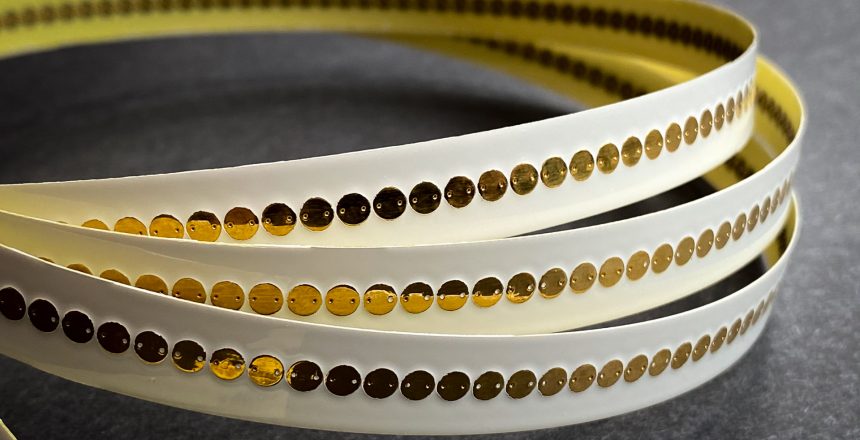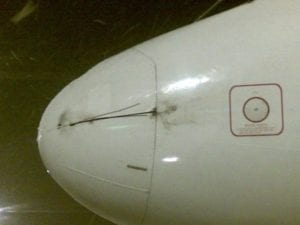Lightning will strike nearly every commercial aircraft once per year. A segmented lightning diverter will keep a plane safe and in service, the occupants safely shielded from the high-voltage strikes.
In this article, you’ll learn how segmented lightning diverter strips work, why they work and how they can keep planes in service.
Need Lightning Diverter Strips for Your Radome Design?
We have diverters in stock and ready to ship

Our StrikeTape lightning diverters are the most durable, advanced protection available for your radome.
If you have a part number from LDS or another manufacturer you need to match, we’ve got you covered. Our aircraft lightning strike protection is world-class.
For more information on current tech in diverter strips, keep reading below.
How do Lightning Strikes Affect Airplanes?
Lightning strikes are a hazard to aircraft of all types–planes, helicopters and airships.
But with recent advances in lightning protection technology, these threats are mitigated and most aircraft takeoff and land safely no matter the weather.
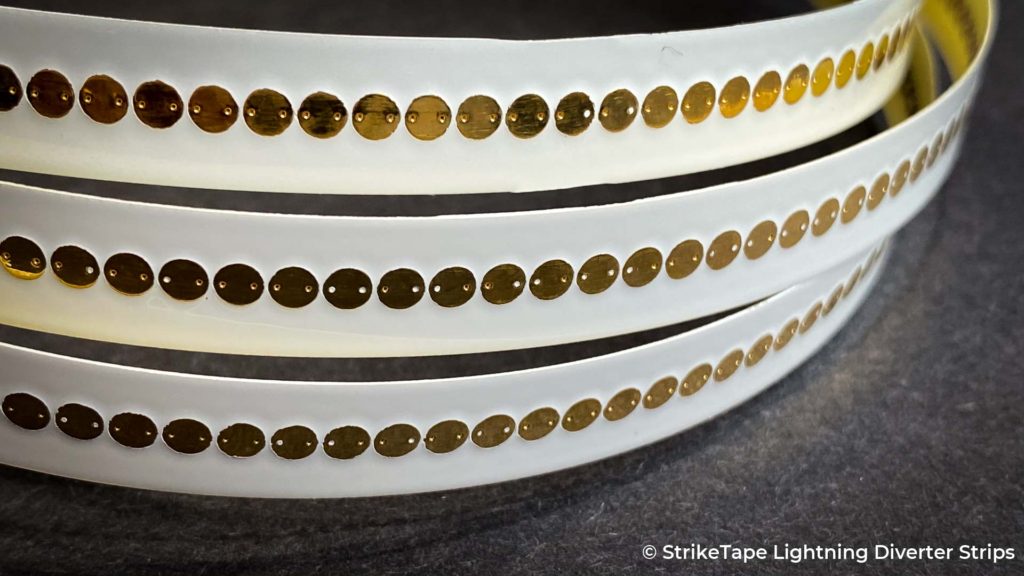
But, the aircraft lightning diverter is a key component in adequate lightning protection. Without it, radomes are often punctured by direct strikes or pitted with little holes that let in moisture which can ultimately ruin sensitive radar equipment.
The hope is that they don’t affect them whatsoever, and that’s because of aircraft lightning diverters. These small but important parts are integral to aircraft safety. Radome design–and having ideal lightning strike protection–is critical.
How Does a Lightning Diverter Strip Work?
A segmented lightning diverter is a thin strip of metal discs with gaps between them, that attracts lightning away from vital composite components – such as radomes – that contain sensitive radar and other equipement on aircraft.
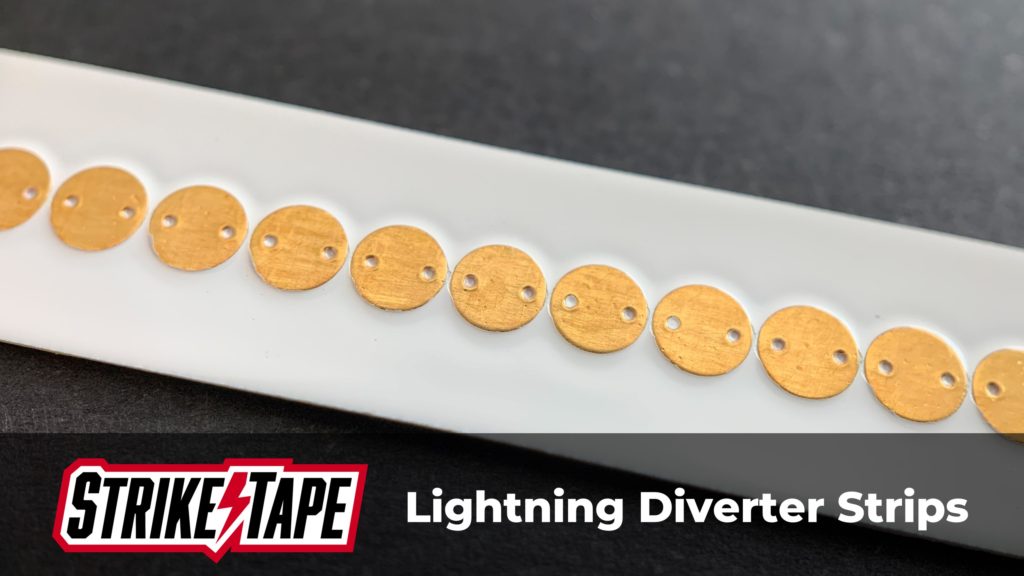
Segmented lightning diverters work by directing the flow of lightning away from composite components, which cannot handle the high current and heat generated by lightning. This allows it to pass harmlessly through the skin of the airplane and back into the air. These are mounted on composite radomes to protect the sensitive instrumentation and radar equipment inside.

What Happens When Lightning Strikes an Aircraft?
It’s an incredibly fast series of events:
First: Lightning Strikes An Airplane.
Lightning strikes are an inevitability for every aircraft–it’s a matter of time, and most get struck once per year in commercial service. The goal is that these strikes pass harmlessly back into the air without damaging the composite radome structures. This is where segmented lightning diverter strips come into play.
Instead of a lightning strike being a catastrophic event that causes severe damage to the plane’s sensitive electronics, the lightning diverter strips do their job and direct the current to the metal skin of the plane, where it then passes safely back into the air.
Typically, lightning strikes will occur on the nose or wings of an airplane, but the radome of the airplane is especially sensitive and must be protected.
Second: Lightning Is Attracted to the Lightning Diverter Strips on the Radome Surface
Lightning is attracted to the metal segments of the lightning diverter strips, which are placed on top of composite components that otherwise would get punctured or burned by the lightning energy. One such component is the radome.
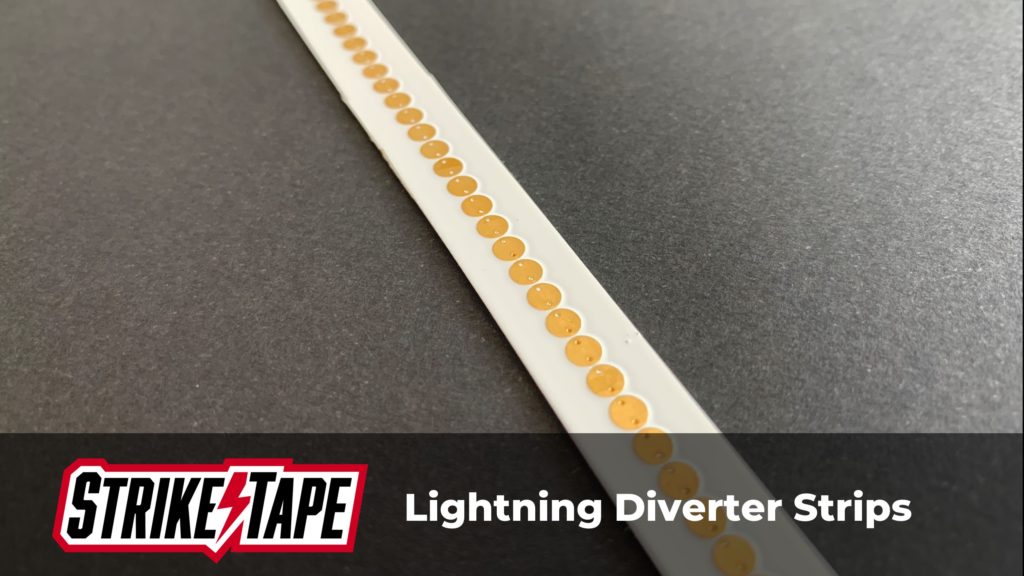
The radome is the enclosure on the nose of an aircraft that protects the radar antenna. It must be made of composite material so radio waves can penetrate, and thus it’s susceptible to damage if lightning contacts it.
On the nose of this FedEx plane below, you can see segmented lightning diverter strips on the nose of the plane – these stripes protect the composite nose radome from lightning, and FedEx uses our StrikeTape diverters on their 777s. Good radome design is important here to make sure the lightning protection is adequate.

Lightning protection for the radome is especially important, as it will direct the electricity onto the metal skin of the plan and away from sensitive radar equipment.
Third: Lightning Jumps Between Each Segment on the Lightning Diverter.
Segmented lightning diverters are designed to force lightning to flow through the air, rather than through the diverter itself.
A cable would have to be incredibly thick–and thus heavy and not at all aerodynamic–to handle the huge voltage of a lightning strike.
Segmentation solves this problem. Watch the video below to learn how this technology works to protect composite structures.
A segmented lightning diverter is comprised of a chain of very thin metal discs that are not connected. This forces the lightning to “jump” from segment to segment through the air, rather than flowing through the metal itself.
This way, the diverter can remain very thin and aerodynamic, while still not being totally destroyed by the incredibly high voltage of a lightning strike.
Fourth: Lightning Flows into the Skin of the Aircraft.
The large surface area of the aircraft skin can easily handle the high voltage of the lightning, distributing it on its way back into the air.
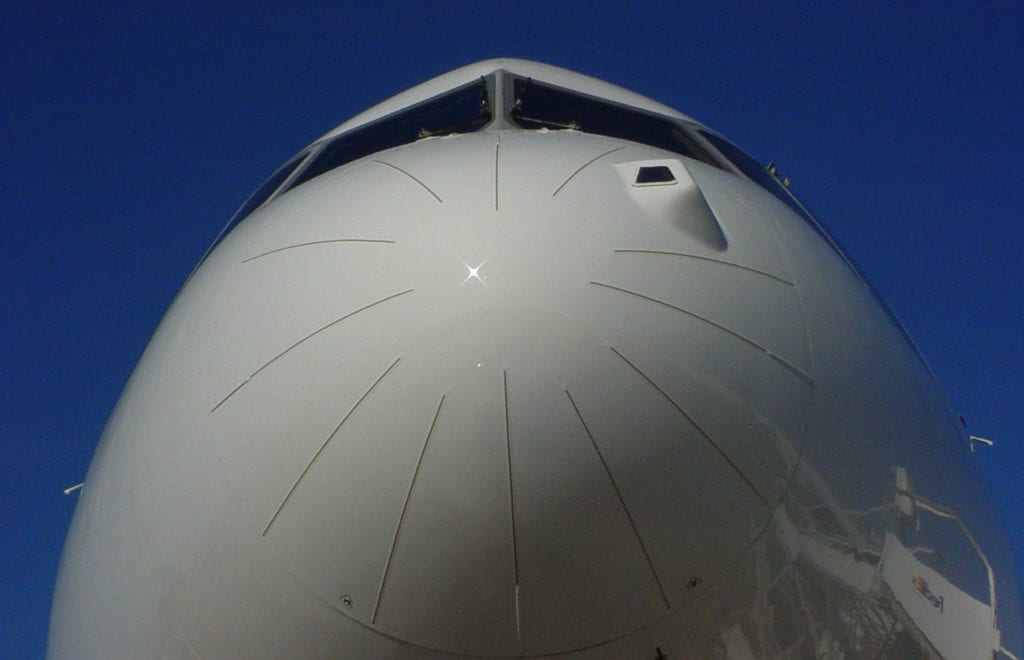
The goal of an aircraft lightning diverter is to direct the flow of electricity to the skin of the airplane, where it will then flow back into the air, then finally to the ground.
In essence, the job of the segmented lightning diverter is to bridge the gap between lightning and the aluminum skin of the airplane. Once it hits the skin, all is well.
Last: The Lightning Passes Back into the Air En Route to the Ground
The aircraft is simply a stepping stone in a lightning strike’s path to the ground.
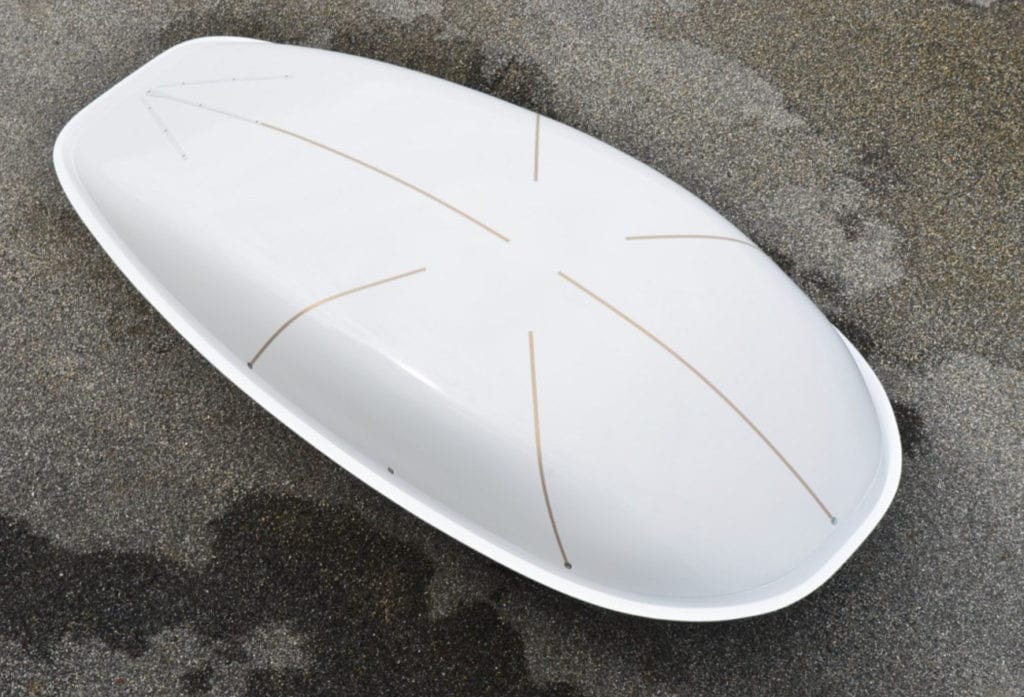
Once the lightning has traveled through the plane, it will continue on the path of least resistance toward the ground.
A Segmented Lightning Diverter Keeps Aircraft & Air Travel Safe
An aircraft lightning diverter is a critical piece of safety equipment, protecting millions of travelers each year.

Yet, many aircraft mechanics are replacing lightning diverters every 1-2 years, wasting time and money re-installing these vital pieces of equipment. A low-quality diverter may wear out in as little as a year of service.
Weather Guard Lightning Tech Manufactures StrikeTape: An Ultra-Durable Segmented Lightning Diverter.
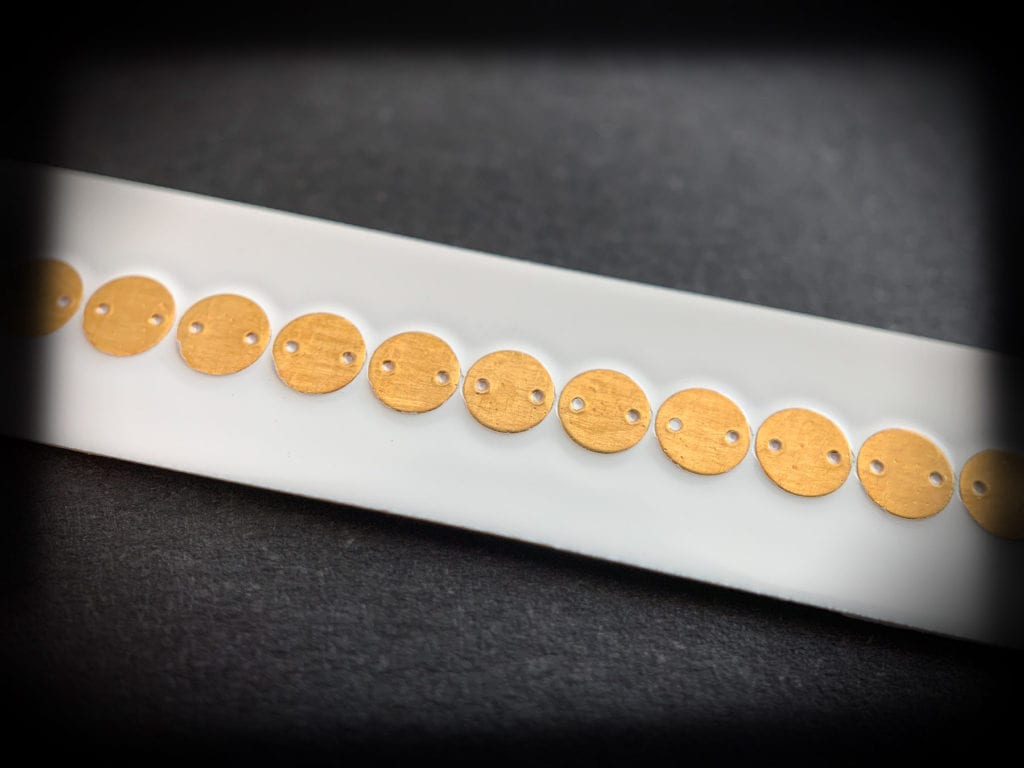
Weather Guard Lightning Tech manufactures the world’s best lightning protection. Our lightning system for aircraft radomes is world-class and ultra-durable. And, we’ve got the data to prove it.
Need Help With Your Lightning Protection System?
We love helping radome engineers finish their designs and install the world’s best lightning protection.
If you need help with your radome design, set up a free call today.
Lightning Diverter Strips FAQ
Read below for common questions and answers about lightning diverter strips. We are one of the premier lightning protection companies in the world–our obsession with quality fuels innovation and improvements in our lightning protection technology.
Segmented lightning diverter strips bridge the gap between an unprotected surface material that can be damaged by lightning–such as a composite aircraft radome–and a metal surface that can safely transfer the strike energy to ground (such as the aluminum skin of an airplane).
Segmented lightning diverters are unique in that they allow the lightning to jump from segment to segment in the air, creating an ionized channel that stays above the material surface, creating less heat and preventing damage. Weather Guard Lightning Tech makes the most durable segmented diverter, called StrikeTape.
Segmented lightning diverters are cleverly designed to force lightning energy to jump from metal segment to metal segment through the air–not the material itself. A segmented lightning diverter–such as Weather Guard StrikeTape–is a high-tech plastic stripe with durable metal buttons (segments) that attract the lightning strike. By directing the energy through the air (instead of the material) it greatly reduces the heat and stress the material is exposed to, thus reducing or preventing potential damage.
Aircraft have a few lines of lightning protection, but segmented lightning diverters are typically the first defense and the place lightning will first strike.
1. Lightning is attracted to the segmented lightning diverter and strikes it, jumping from segment to segment through the air in an ionized channel.
2. The lightning then is directed to a screw or metal bar diverted that directs the lightning energy into the metal skin of the aircraft.
3. The lightning flows safely through the skin of the aircraft
4. Finally, the lightning leaves the aircraft skin and returns to the air, where it finishes its path to the earth to find ground.
Many lightning diverter strips on the market are made with thin, cheap substrate materials that cannot withstand repeated high-amperage lightning strikes; they fail when subjected to multiple strikes. Diverters also fail with degradation from rain erosion, as aircraft flying through storms at 300-500mph create an extremely abrasive environment for a diverter to withstand. The construction and engineering of a lightning diverter strip is also critical, as parts without through-fastening, with cheap metal materials and other corners cut in engineering tend to fail after just a few strikes. StrikeTape lightning diverters are built with premium materials and are engineered for very long life and repeated strikes in the most brutal weather conditions.
Need Lightning Diverter Strips for Your Radome Design?
We have diverters in stock and ready to ship

Our StrikeTape lightning diverters are the most durable, advanced protection available for your radome.
If you have a part number from LDS or another manufacturer you need to match, we’ve got you covered. Our aircraft lightning strike protection is world-class.

